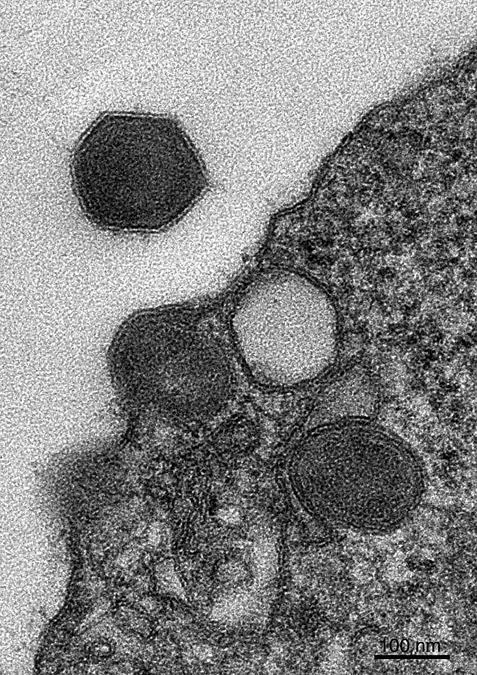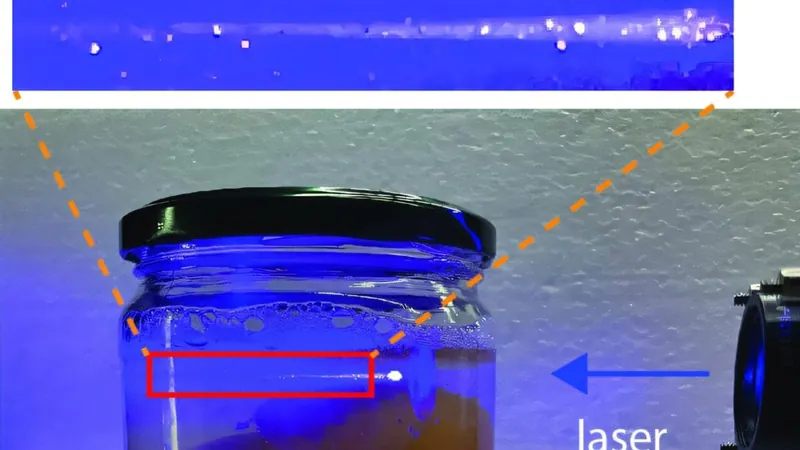
Unearthing the Secrets of Giant Viruses: How They Hijack Algae and Impact Earth's Ecosystems
2024-09-30
Author: Li
Have you ever wondered about the strange world of giant viruses, often referred to as "giruses"? These extraordinary entities have been the subject of speculation and intrigue since their first discovery in the early 21st century. Some even claim they hail from outer space, challenging our very understanding of what constitutes a virus. With genetic material up to 100 times greater than that of typical viruses, some giruses are even larger than certain bacteria.
Recent research sheds light on these viral giants and their surprising role in affecting life on Earth, particularly our oceans. Giant viruses are known to infect single-celled algae, crucial photosynthetic organisms responsible for producing about half of the oxygen we breathe and facilitating a significant portion of global carbon fixation. However, what happens when these viruses strike? The consequences can be severe—viral infections can cause rapid declines in colossal algal blooms, vast gatherings of algae that can stretch for miles across the ocean. This could potentially disrupt not just marine ecosystems but also atmospheric and terrestrial systems.
A research team led by Professor Assaf Vardi of the Weizmann Institute of Science has made significant strides in understanding the complex interactions between giant viruses and their algal hosts. By employing cutting-edge single-cell RNA sequencing techniques, the researchers analyzed samples collected from an algal bloom in picturesque Norwegian fjords. This innovative approach provided unprecedented insights into the specific species of algae being infected, something previous studies had struggled to accomplish.
Unlike traditional methods that involve bulk analysis of genetic material from ocean water samples, Vardi's team focused on examining individual cells. “Our method allows us to see not just which species of algae are present, but also if they are actively infected by giant viruses,” says Amir Fromm, a Ph.D. student and the study's lead author. This level of detail was previously unattainable, representing a game-changer in our understanding of marine viral ecology.
Through their meticulous analysis, the researchers discovered a variety of previously unknown virus-host relationships, with many infected cells belonging to the dominant algae species, Emiliania huxleyi. Incredibly, they identified 972 infected cells overall, revealing a whole new world of viral interactions. Among these was a novel link between the Imitervirales-07 virus and algae from the Katablepharidaceae family— a connection no one had documented before. This specific virus produces proteins that can trigger destructive programmed cell death in algae, hinting at the dark side of these viral infections.
The researchers even established a direct correlation: the appearance of certain viruses was linked to the swift collapse of the algal population. This finding underscores the critical importance of understanding these interactions in the face of ongoing environmental changes.
But the implications of this study extend far beyond the fjords of Norway. The methods developed to characterize infected cells from minimal RNA could be applied globally, including in extreme environments like polar regions or alpine lakes. As climate change continues to thaw ancient ice caps, revealing long-buried pathogens, this research could help prepare humanity for emerging ecological threats.
Vardi emphasizes the urgency of the matter: “As ancient pathogens are released into the environment due to warming climates, identifying and understanding these entities will be crucial in tackling future health and ecological challenges.”
So, the next time you gaze at the ocean, remember that beneath its surface, a microscopic battle rages between giant viruses and algae, significantly influencing our planet’s health and climate. The hidden world of "giruses" is more than just a scientific curiosity; it’s a critical piece of the puzzle in understanding our rapidly changing environment.




 Brasil (PT)
Brasil (PT)
 Canada (EN)
Canada (EN)
 Chile (ES)
Chile (ES)
 Česko (CS)
Česko (CS)
 대한민국 (KO)
대한민국 (KO)
 España (ES)
España (ES)
 France (FR)
France (FR)
 Hong Kong (EN)
Hong Kong (EN)
 Italia (IT)
Italia (IT)
 日本 (JA)
日本 (JA)
 Magyarország (HU)
Magyarország (HU)
 Norge (NO)
Norge (NO)
 Polska (PL)
Polska (PL)
 Schweiz (DE)
Schweiz (DE)
 Singapore (EN)
Singapore (EN)
 Sverige (SV)
Sverige (SV)
 Suomi (FI)
Suomi (FI)
 Türkiye (TR)
Türkiye (TR)
 الإمارات العربية المتحدة (AR)
الإمارات العربية المتحدة (AR)